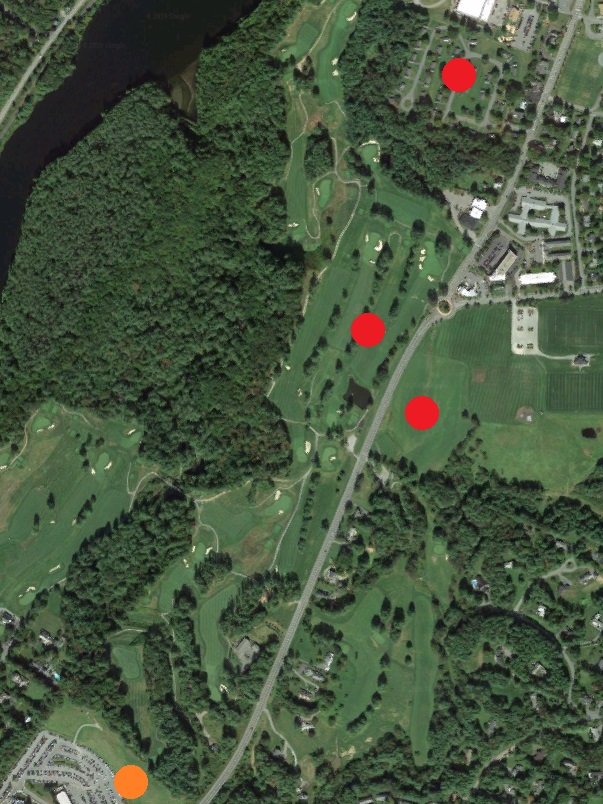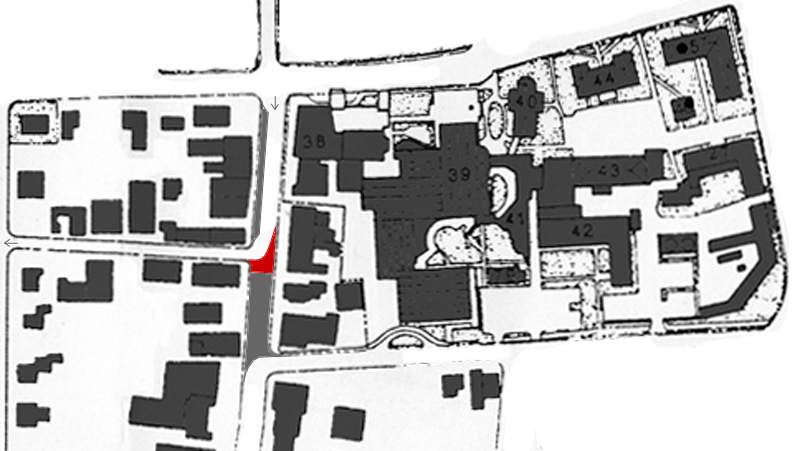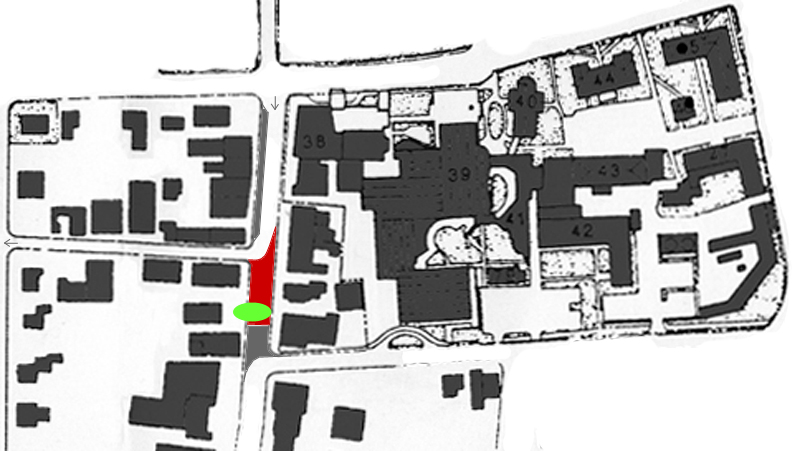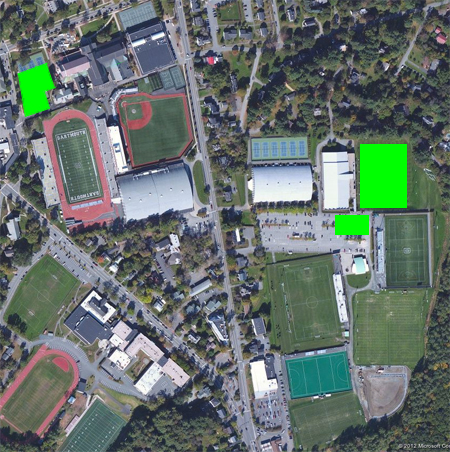A neat color view of Dartmouth Row, probably from the 1850s, appeared on Antiques Roadshow.
This quotation about Dartmouth is intriguing:
Although on the surface it might sound heretical, the institution is looking to reduce future building as much as possible. Conscious of the escalating costs of higher education, the college’s senior administration has instituted a program that requires academic departments to pay rent, essentially to make them more conscious of space costs and usage efficiencies. “The greenest building is the one that is never built,” [Director of Campus Design & Construction John] Scherding says.
So will rents rise in the most desirable buildings as departments compete for space? Will a wealthy department be allowed to build itself a new building if it can afford it?
At one point, the Wilson Architects design for the new Thayer/CS building envisioned a structure of 150,000 sf and a parking garage holding 400 cars (a LinkedIn profile). The Dartmouth has an article on the proposed parking structure, which the college now seems to be emphasizing less.
Remember the North Campus Academic Center? Back in 2014, CFO Rick Mills explained that the project was on hold:
“We’re actually taking this year — both capitalizing some of the expenses that were incurred [and] some implementation expenses that were utility relocation and other things. … We’re also writing down some of the planning expenses, because as originally conceived, it’s not moving forward in that capacity.” According to Mills, completely new plans for that site are “going through a completely new process of evaluation” that the Dean of Faculty is discussing with President Hanlon and the Board of Trustees. The plans will have to take into account “the external science funding environment for what we can expect from NIH and other places [and] that the Williamson Translational Research building is under way …”
There are plenty of good reasons not to build the large Kim-era design, but with Gilman and Kresge now boarded up and the medical library occupying temporary quarters in a former nursing school dormitory, it would seem that something needs to be built.
Here’s an interesting Bldgblog post on the ghost streets of Los Angeles.
The Valley News covers the installation of a plaque at Harvard honoring slaves there. Although the idea is not new (see U.Va.) and the wording might be a bit awkward (in an expectedly academic way — “worked here as enslaved persons”), it seems like a good idea. Where would such a plaque be appropriate at Dartmouth? Eleazar Wheelock’s house would be a good place, since Wheelock was the chief slaveowner in early Hanover. The writers would have to be careful about using the word “here” or the phrase “on this site,” since the house was in a different location when slaves worked there. And the house is no longer owned by the college anyway, so the new owner would have to favor the idea.
A Google Street View image of the rear of the Boss Tennis Center, as seen from the adjoining neighborhood:
The fieldhouse proposed for the site next door (Bing aerial) is not popular with the neighbors (The Dartmouth). Here is the latest from the April 5 Planning Board meeting (pdf):
Submission of Application for Site Plan Review by the Trustees of Dartmouth College to construct a 69,860 sf indoor practice facility on the “sunken garden” site, east of Boss Tennis Center, 4 Summer Court, Tax Map 34, Lot 102, in the “I” zoning district. The applicant has requested that consideration of this proposal be postponed until May 3. There is concern about the proposed conditions of approval regarding the adequacy of the town stormwater system to handle the proposed stormwater flows. More research about the drainage in that section of Hanover will be done.
From the same agenda item:
In addition, the College has submitted another site plan review application for an expansion of the soccer pavilion at Burham Field. Both the indoor practice facility and the soccer pavilion projects rely on the eastern portion of Thompson Parking Lot for material laydown, construction trailers, contractor parking, porta-potties, etc., as well as Summer Street for the sole construction access for both sites. Abutters to the indoor practice facility project were contacted by the College to apprise them of the request for continuance.
The original “sports pavilion,” designed by Freeman French Freeman, Inc., has an appealing scale; one wonders how it will be expanded. Let’s hope that 19th-century suburban metro station feeling isn’t erased from the building’s south facade. (And will Dartmouth’s most notable unnamed building finally be named in honor of someone or something?)
“Dartmouth Dining Services (DDS) is also involved in the MDF effort by establishing a C-store (mini convenience store) in each of the house centers. The C-store will be fashioned after those in Goldstein Hall and in East Wheelock. DDS is also rolling out a new senior apartment meal plan for undergraduate students who will live in campus apartments” (“Campus Services Supports Moving Dartmouth Forward,” Behind the Green (2 March 2016), 2 pdf).
A contest involving drawings of the Frost Sculpture in College Park.
A story in the Valley News reports that a developer is buying hundreds of acres near the Joseph Smith Memorial for an ideal city. The NewVistas Foundation website proposes “a settlement comprised of 50 diamond-shaped communities of 15,000 to 20,000 people each, which are located adjacent to each other.” The standard urban building form includes an underground “podway,” a bit like the Disney “utilidor,” and the shopping is to be done in podway-level malls, protected from the elements…
—————————-




